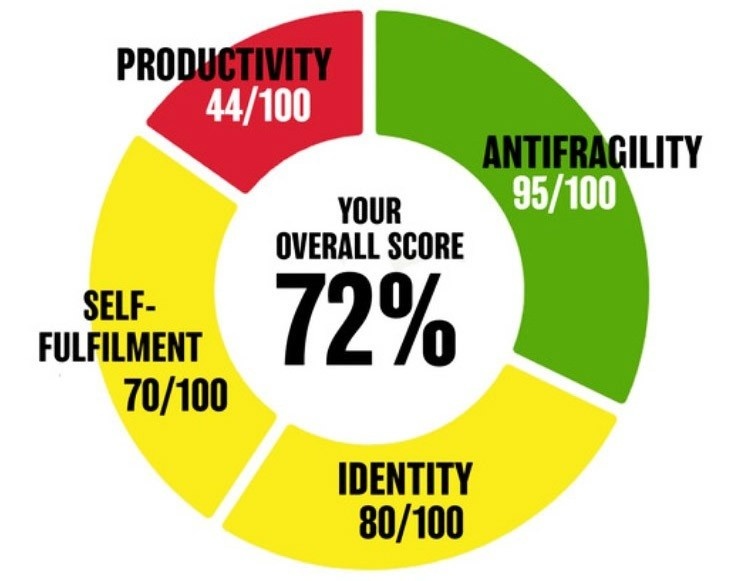SUMMARY
- Great leaders aren’t born, they’re made. You don’t need to have a leadership or CEO gene to be a great leader and the skills that define these people are all learnable. In this episode I’ll outline 4 key behaviors of world-class leaders and discuss how you can build those capabilities into your life.
- A great leader is someone who prioritizes speed over precision in their decision making. To do this, give yourself a shorter period of time to make a decision, involve others where they can provide relevant information to help you act faster. You also have the option of delegating decisions to others and simply making fewer decisions yourself.
- A great leader must get the organization to rally behind their decisions and actually drive results by leading with intent. In all interactions, leaders need to clearly articulate the vision of the company, the purpose of the team, the reason goals are being pursued to tie back decision making, systems, and approaches into shared vision and goals.
- A great leader needs to be relentlessly reliable. You always need to follow through with things, otherwise that lack of follow-through damages your integrity because it indicates a tacit approval for others to do the same. Once you demonstrate relentless reliability, then you can hold others to the same model of excellence, which puts you in a strong leadership position.
- Leaders must be constantly aware of any changes on the horizon, and be ready to adapt boldly to them. Keep your antenna tuned to the future — to new ways of selling new products. Don’t be the last to make the adaptations that your market or team requires of you as a leader.
TRANSCRIPT
Most people think that top leadership roles and at the very least the CEO role are reserved for extraordinary people. The truth is there’s only a handful of behaviors that take an ordinary person. The truth is there’s only a handful of behaviors that transform an ordinary person into a world class leader.
Hi, I’m Eric Partaker. Today I want to share my journey from founder to CEO and some of the things that I learned in the process. I hope that it will help you close that gap between where you are and where you’d like to be as a leader, as a leader in your company within your work, within your role or within your teams.
Now, when I started off as a founder in my own company, I quickly recognized that there was a big difference between what it required to be a founder in the company and what it required to be a CEO of the company.
In other words, I started to notice that there was a big difference in what was required to start a company and what was required to actually be a leader within the company. As a founder, you’re pretty much a Jack of all trades. So you have to, by necessity, do just about everything in relation to your business. You have no choice. I remember for example, with a restaurant chain that we built, I remember three times a week I had to wake up at 4:30 AM to drive down to the meat market and make sure that we had enough chicken, steak, pork, and beef for our menu each and every day. That was just exhausting, but I had to do it. There was no one else that was available to do it, and plus I wanted to make sure I was learning every aspect of the role. But as I transitioned from being a founder and a Jack of all trades, I started to realize that I needed to become a more effective leader.
I had to learn how to not do everything myself, but instead work more effectively through others. And at one point I started to question if I had what it took to be the leader that the company needed. I remember I voiced those concerns with my coach. I said, “I’m not sure if I have everything that it takes.” My coach at the time said, “Of course you do, all the skills are learnable. You just need a bit more practice. You just need to put some more effort into it.” Then he came up with an idea which I thought was absolutely ridiculous at the time, but I’m very grateful for the suggestion. He said, “You should go for the CEO of the year award here in the UK.” I thought that was too lofty of an idea, a bit overkill for simply wanting to improve as a leader, but sure enough, that massive goal inspired action that I never would have dreamed of taking.
I ended up learning quite a lot in the process as well, which I’ll be sharing with you in today’s video. One of the things that I ended up doing was just going out and trying to soak up as much knowledge as I could. With that goal in mind, working two years prior to that goal, I started to interview a lot of top performing CEOs to understand what’s driving their success. What are the traits that they associate with their performance? If they could do anything differently, what might that be? I started tearing into lots of different books and articles on both leadership and peak performance. I also started to solicit feedback from my team and colleagues. So what was I doing well in their mind, and what could I be doing better?
And as I took all of this information together and constantly applied it, I ended up making that transition from founder to CEO. And I was even recognized as the UK CEO of the year at the business excellence forum in 2019. Now, one of the books that I came across during that research phase for my own development is called the CEO next door. This is a groundbreaking book where they looked at over 2,600 leaders. CEOs, perspective CEOs, to understand what the behaviors were that transformed an ordinary person into a world class leader.
What emerged was that you don’t need to have a leadership gene or a CEO gene. CEOs aren’t born, they’re made. All these skills and behaviors, they’re all learnable. When they looked at those who had, achieved a lot of success, only 7% of the CEOs, for example, had gone to an Ivy league school. Another 7 or 8% hadn’t even gone to any university at all.
So it wasn’t even their background or their pedigree which was attributable to their success. It was the degree to which they mastered just four behaviors.
The first behavior is decisiveness. One of the hallmarks of a great leader or a CEO is someone who prioritizes speed over precision in their decision making. There are a few ways that you can do that. One, you can actually focus on making decisions faster. I know that might sound a little bit simplistic, and what do you mean make decisions faster? But just make decisions faster. Focus on something called Parkinson’s law. You may not have heard of Parkinson’s law, but it’s simply the law stating that work will expand up to the amount of time given for its completion. So if you decide to take a long time to make a decision, it will feel like it took a long time, make that decision.
If you decide to make a decision quickly and give yourself a set period of time, much shorter than you would have otherwise chosen, you will make that decision more quickly.
Another way that you can facilitate making quicker decisions is by involving others in the process. I don’t mean giving them a vote, but give them at least a voice, try to understand how other people within your team or around you view the decision, view the choice and benefit from those various perspectives. Another thing that you can do to improve your decisiveness is to focus on making fewer decisions. So a lot of times we feel like we constantly need to be deciding things, but often some of the decisions that we’re making would have just resolved themselves if we hadn’t taken any action. You have to be careful with that one, but sometimes things will resolve themselves.
Other times we feel like we need to make all the decisions ourselves, when actually we could have been asking our teams or those around us to go ahead and make the decision on their own. So help them define what it is that you want to be doing, but let them decide how it is that they’re going to go about doing it. Another thing to help improve your decisiveness is to continuously improve your decision making over time. So every time you’ve made a big decision, or perhaps once a month, review all the decisions that you’ve made – on your own and or together with your team – and ask yourselves, “What did I do well with regards to this decision? What could have I done better? And if I were to do this again, what might I have done differently?”
When it comes to decisiveness, often we are just choosing between binary options. If we just generated at least one additional alternative, a third or a fourth option. It could be a hybrid option, or an option that we’re not currently considering, or an option that emerged from consulting others for their points of view. If we just add at least one alternative option to the decision set, such that it’s not a binary decision tree, then often it will speed up our decision making. So take all of those points into consideration and ask yourself, how could I use these points more proactively to improve my decisiveness, which once again is a very key leadership behavior in transitioning from an ordinary person to a world class leader.
Now, the second behavior that emerged in the book, the CEO Next Door, was engaging for impact. Being decisive is the first step, but we also must get the organization and the team to rally behind our decisions to actually drive results.
The first way we do that is by leading with what’s called intent. Being super intentional about how we’re leading and making sure that in all of our interactions we’re articulating, “What is the vision of this company? Where are we going? What is the purpose of this team? Why are we pursuing these goals?” So being very, very intentional and constantly using just about every interaction we can to tie back decision making, thoughts, ways of being, systems or approaches that we’re using back to our intent and our vision, what it is that we’re ultimately trying to go after.
The other way that we can engage for impact is through a process called perspective gathering. This is where we want to tap into the various resources within a team, within a company, from the investors to the board, to colleagues to customers, to frontline staff, and just understand what their perspectives are.
How do they truly think and feel about the situation, or the product or service? About the company, about the direction that you’re going? About what we should be, or should not be doing? Constantly understand empathetically, where everyone is coming from. That perspective gathering helps you better engage with others and helps you better engage in general for impact.
The last thing that we can do to help us engage for impact is to install meeting rhythms and routines that regularly bring people together so that things can be discussed, that points of view can be considered, and that once again, we’re considering everyone’s various perspectives.
So two behaviors thus far – one is decisiveness and the other is learning how to engage for impact. The third behavior that emerged in their study was relentless reliability.
This is a personal favorite of mine. I really pride myself on my consistency, my drive, and determination to get things done, no matter what is up against me. I wasn’t always like this. I had a horrible habit of saying things, but not following through and actually doing those things. What that does as a leader is it really damages your integrity. Because if, as a leader, you’re perceived to say one thing, but do another or not do at all, then it indicates in a tacit approval way that everyone else can also do the same – so that they can say they’re going to do things, but not actually do them. So what does relentless reliability actually look like? Well, some of the ways in which I create that is using checklists for aspects of the business or the teamwork that are quite repeatable.
I don’t want to have to constantly think through over and over and over again, because that just drives you crazy. And then of course, you’re spending too much time doing things that you’ve already done. So you want to reserve that brain power for other things. The other thing that I do is make sure that at the end of every single day, I’m reviewing any meetings or notes that I took from the day and making sure that I’m updating my to do list so that I’m going to action the things that have emerged in the course of that workday. That could be following up on action items from meetings, that could be following through with making a phone call that I said I was going to make, making sure that I’m getting a piece of information over to someone who requested something, but always making sure that that follow through is happening.
When you start to demonstrate relentless reliability that people can always count on you for doing the things that you say you’re going to do, then, and only then in a strong leadership position, can you actually demand and hold others to the same models of excellence and standards that you yourself are showcasing? So it’s at that point that you can start demanding and expecting others to have that same level of reliability, but you must role model the way first yourself. So really take a moment and ask yourself – as a leader, are you really being relentlessly reliable? Do you really do all the things that you tell people that you’re going to do? Do you follow up consistently? Do you have checklists to help you do things so that you don’t constantly forget things? You know, are you showing up as strongly and as reliably as you could?
So three behaviors so far – we have the first one decisiveness. We have the second one, engage for impact. We have the third one, which is relentless reliability. The fourth and final behavior to transform an ordinary person to a world class leader, as discussed in the book, the CEO Next Door. As I absolutely agree with it, in my own experience from founder to CEO of the year, that fourth behavior is the ability to adapt boldly. Bold adaptation is recognition of the fact that change is constantly happening. Our environment is changing. The market conditions are changing. People around us are changing, and we have to be willing to let go of the past. Ways of being, ways that worked previously, old habits and routines, and be willing to open our mind up for new ways of doing things. And at the same time, keeping an antenna for the future. Maybe the market’s changing, maybe the industry’s changing, maybe the old way of selling doesn’t work anymore.
Maybe a new way of product design is the future. We have to constantly be aware of what these changes are on the horizon and adapt boldly to them. We don’t want to be last in that game. We want to be ahead of the pack. We don’t always need to be first either. Sometimes there’s an advantage to moving second, but we definitely don’t want to be dead last to the bold adaptation that our market or team requires of us as a leader.
One of the really nice ways to involve a team in this bold adaptation approach is to ask the team to consider that 18 months have passed. All of the objectives that the team had set out for itself have failed. You haven’t had anything. Ask them, “What would be the plausible reasons for failure in each of those instances?” If that was the case, they have to believe that to be true. If that were the case, what would have had to have happened? Have them really think that through and then develop a plan to mitigate each of those potential reasons.
So I hope you found that useful. I hope you have that sense of belief that you too, as I did, can transform yourself from an ordinary person to a world class leader, whether that’s you doing something similar to me, going from a founder to a CEO, or simply developing your leadership skills within your role or within your company. You can do it. I know at times that you’ll feel that I don’t have what it takes. Cause I felt these exact same feelings. You’ll feel that the journey is too hard, that you might try and you might fail, but have the belief that it is possible because so many people have done it before you. And if you just have that belief, if you optimize your environment and make sure you’re reading up on the things that you think will aid you in your mission, focus on these handful of behaviors discussed today and really go for it and take action, create some positive momentum. You can also close that gap. You can reach that next level in your leadership. Others have done it and you can too.




